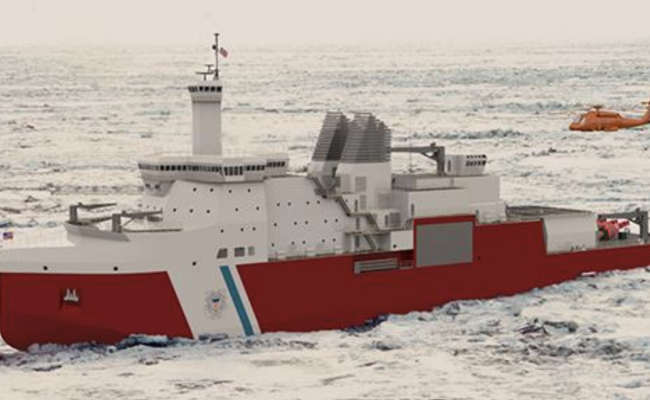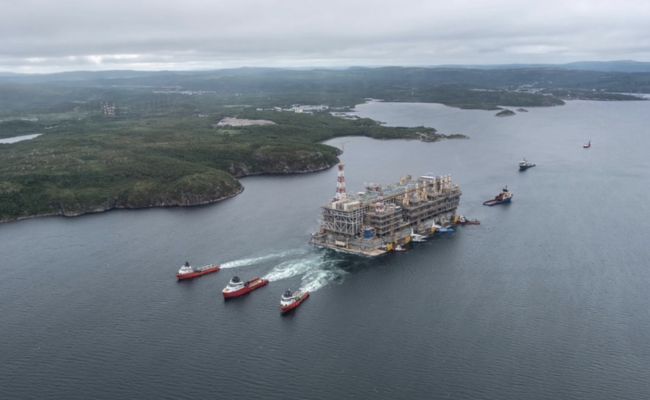Steel Cutting for New US Icebreaker Begins, But Delays Continue to Stack Up Says New Government Report
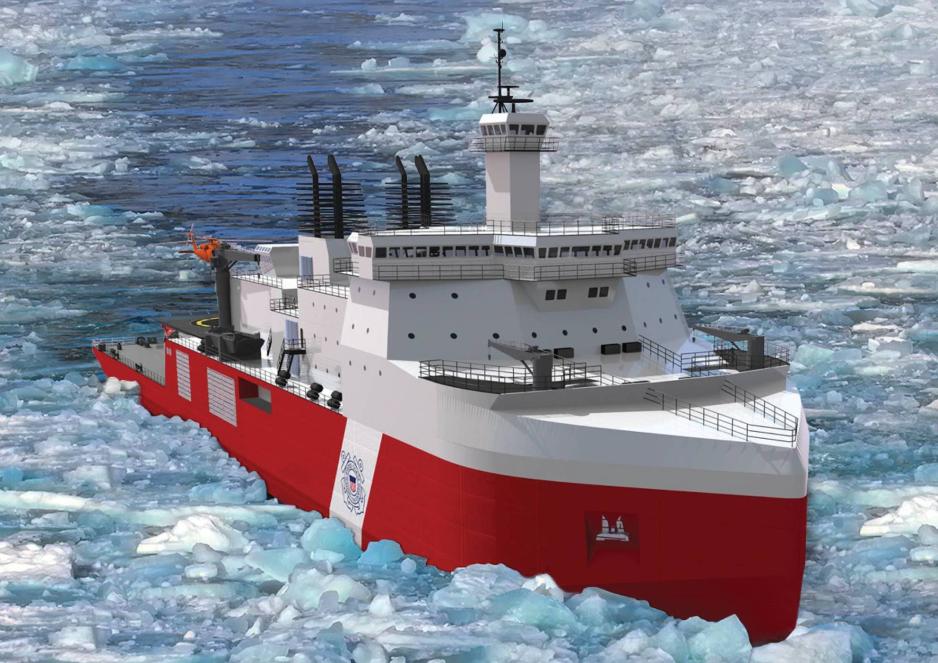
Artist rendering of the Polar Security Cutter. (Source: Bollinger)
The US Coast Guard icebreaker program continues to move forward, albeit far behind the original timeline. Steel cutting on prototype modules began earlier this month, but a new Government Accountability Office report pushes readiness of the first vessel into 2028 – with additional delays possible.
Bollinger Shipyards announced that its Mississippi-based shipyard has begun cutting steel on the first eight prototype modules for what will become the first US Coast Guard Polar Security Cutter (PSC). The vessel, to be named Polar Sentinel, will be the first heavy icebreaker constructed in the US in 50 years.
Bollinger intends to test systems, processes, people, and construction methods with these first eight modules before moving on to the actual construction of the full icebreaker, which consists of 85 modules.
The company says that the completion of each module will take around four months. Only then can the construction of the actual vessel begin. Complexities relate to the thickness of the steel and the use of a high-strength steel alloy called EQ47 suitable for the Arctic’s low temperatures. US shipyards, however, have little experience using the material.
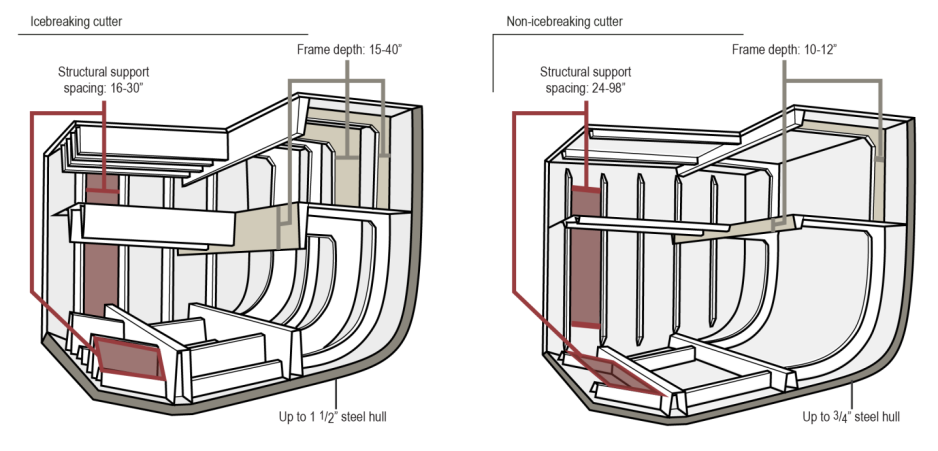
Comparison of Icebreaker Design Frame Elements versus Non-icebreaker. (Source: GAO)
Bollinger was awarded the contract for the construction of three new PSC in 2019. The program has faced a series of delays with design elements yet to be finalized. The completion date for the first PSC has continuously been pushed back from initially 2023/24 to 2027 earlier this year.
Delayed until at least 2028
A new report from the US Government Accountability Office (GAO) suggests further delays and points to shortcomings in the design phase and lack of oversight. The first vessel will now not be ready until the middle of 2028, with further delays likely if construction were to begin before the design was finalized.
The GAO found that the “design is not yet mature which has led to an extended design phase and contributed to a 3-year schedule delay in the shipyard, with construction of the first cutter now planned for March 2024.”
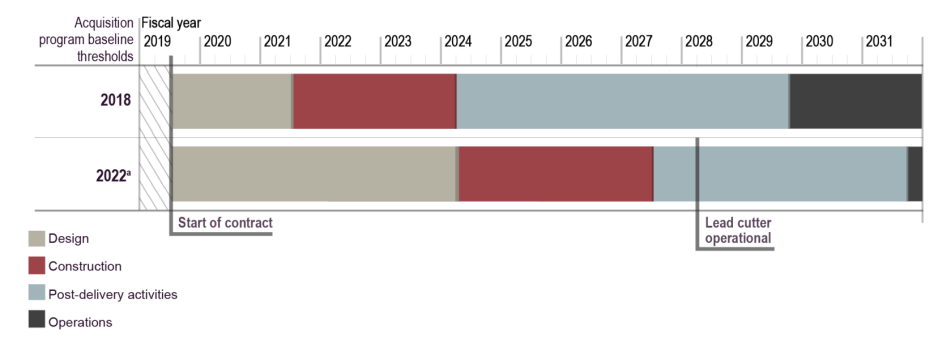
Schedule Changes for the Polar Security Cutter Program 2018 vs 2022. (Source: GAO)
Even with a construction date of March 2024, completion by 2028 will remain challenging. The last US-built icebreaker – the smaller and less complex medium icebreaker Healy – took nearly 4.5 years to build.
Originally the design was intended to be fully mature by March 2021, but the shipyard underestimated the complexity of the design and “magnitude of design changes” after it was awarded the contract, says the GAO.
The original PSC design was based on a German design for the Polarstern II, however, length, width and draft were subsequently altered. The length was changed from 476 feet to 460 feet with the width reduced by two feet to 88 feet and the draft lowered to 34.5 feet from 36 feet.
While some delays, such as Covid-19 pandemic, were outside the control of Bollinger, the company committed a number of errors, especially related to design revisions, the GAO says. As late as May 2022 the shipyard identified flaws in the design that did not meet design requirements.
Risks further delays
The GAO report points to significant risks for further delays. Over the past two years progress on finalizing design has been much slower than required.
“At [the current] design completion rate, it would take the shipyard approximately eight years to complete functional design,” the GAO states. The shipyard needs to reach certain design targets for functional and transitional design maturity before construction can begin.
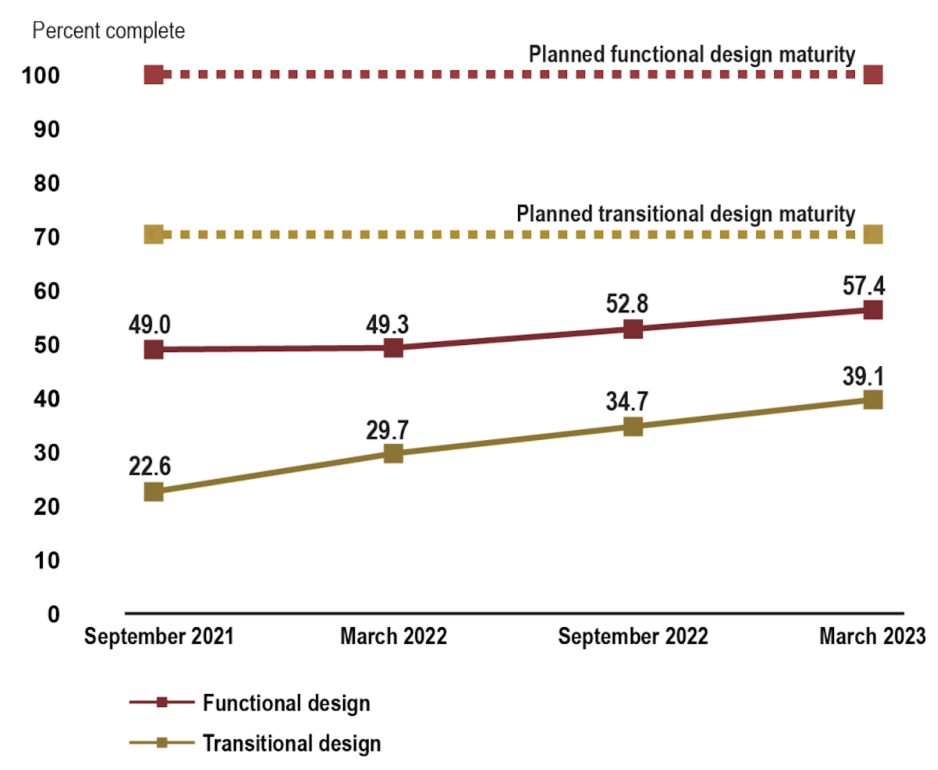
Polar Security Cutter Program’s Progress toward Planned Functional and Transitional Design Maturity, September 2021 to March 2023. (Source: GAO)
While it is unlikely that progress will remain this slow going forward, the design completion rate would have to increase manifold to meet the stated March 2024 goal of reaching design maturity.
“To reach the program’s goal of 100 percent functional design completed prior to March 2024, the shipyard would need to increase its design completion rate from about three percent every six months to almost 21 percent for each of the two remaining six-month periods,” the report concludes.


